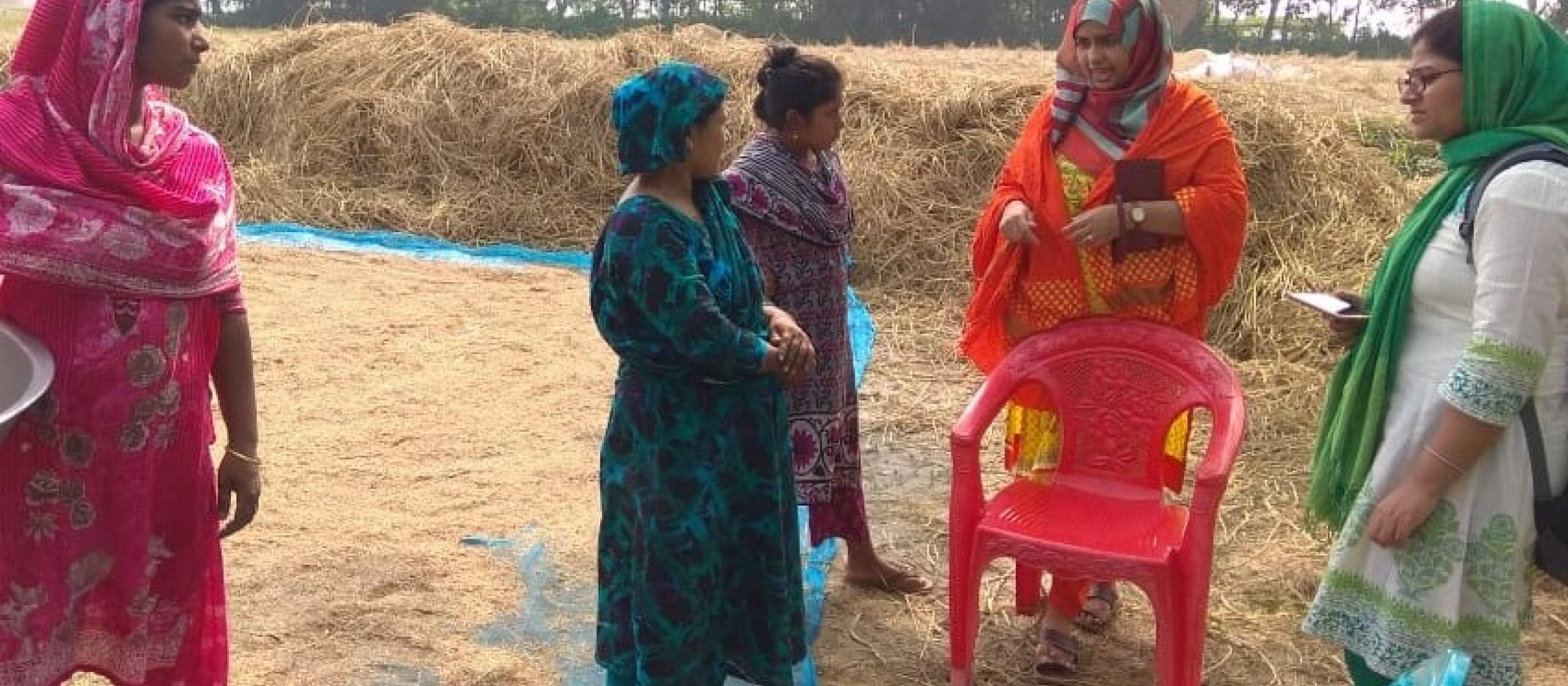- HomeHome
-
About ACIAR
- Our work
- Our people
-
Corporate information
- ACIAR Audit Committee
- Commission for International Agricultural Research
- Policy Advisory Council
- Agency reviews
- Executive remuneration disclosure
- Freedom of information (FOI)
- Gifts and benefits register
- Information publication scheme
- List of new agency files
- Contracts
- Legal services expenditure
- Privacy impact assessment register
- Commonwealth Child Safe Framework
- Benefits to Australia
- Careers
- 40 years of ACIAR
-
What we do
- Programs
- Cross-cutting areas
- Resources
- Where we work
-
Funding
- Research projects
- Fellowships
-
Scholarships
- John Allwright FellowshipScholarships to study in Australia for ACIAR partner country scientists to have Australian postgraduate qualifications
- ACIAR Pacific Agriculture Scholarships and Support and Climate Resilience Program
- Alumni Research Support Facility
- Publications
- News and Outreach
Date released
18 April 2019
Dr Sreenita Mondal is a young Indian researcher harnessing her diverse skills to examine the role of women in agriculture on the fertile Eastern Gangetic plains.
The art and science of geography is the link between Dr Sreenita Mondal’s abiding interest in gender studies and the seemingly disparate subjects of agriculture, water use and conservation. She uses a geographer’s diverse toolkit, including remote sensing, digitised mapping and traditional qualitative research, to show that you cannot resolve one issue without considering many others. Dr Mondal is lead researcher on an ACIAR-funded project run by the South Asia Consortium for Interdisciplinary Water Resources Studies (SaciWATERs), within the ACIAR-DFAT-funded Sustainable Development Investment Portfolio (SDIP).
‘Understanding women’s role in agriculture in the Eastern Gangetic plains: the macro and micro connections’ seeks to critically revisit the role of women in agriculture in the Eastern Gangetic Plains, an area encompassing parts of India, Nepal and Bangladesh. This region of highly fertile land, however, has a high economic dependence on subsistence agriculture, low productivity, limited crop diversification and a high incidence of rural poverty.
Dr Mondal, who joined SaciWATERs after working as Assistant Professor of Geography at Raniganj Girls’ College affiliated to Kazi Nazrul University, West Bengal, sees the irony in her evolving academic speciality. ‘My family was not at all involved in farming,’ she says. Despite this, geography became her academic passion, with a specialisation in regional development. Her PhD thesis, from New Delhi’s prestigious Jawaharlal Nehru University, was titled ‘Accumulation through dispossession: contestations of subaltern spaces in coal-steel industrial complex of eastern India’.
Her academic career came out of the mines and into the fields, so to speak. ‘I got the opportunity to work with an agricultural scientist at a research institute in New Delhi, Centre de Sciences Humaines. There I was working on the local and global challenges the Indian dairy system is facing. The project aimed to understand the ongoing transformation of the Indian dairy system and its diversity, and to assess the extent to which it represents a sustainable development model, able to address food security, social inclusion and environmental issues.’
Without realising it, she was also assembling the disparate research skills needed for the SaciWATERs project. It required the insight of her focus on gender, the broad knowledge of her geography background, and the specific rural focus she had acquired in milk production study. It also required a distinctive combination of quantitative and qualitative research methods. Dr Mondal’s education had given her just such a combination, with training in geographical information systems software, statistical analysis software, as well as language skills.
The SaciWATERs project covers four regions: the Indian states of West Bengal and Bihar, Bangladesh and Nepal. Fluent in Hindi and Bengali (and English), Dr Mondal speaks the majority language of three of the four study zones. ‘That was an advantage for me,’ she says modestly.
‘We consider the Eastern Gangetic Plains as a broad region—a macro region with many diversities within it,’ Dr Mondal says. ‘Women’s participation in agriculture has increased substantially in Bangladesh and Nepal, essentially because of male selective outmigration (and many other reasons). However, in Bihar and West Bengal, the situation is quite different; women’s participation in agriculture, and in the rural workforce, is declining day by day. We wanted to find out the reasons behind that. It was short-term research, so it wasn’t possible to explore all the possibilities, but we did manage to answer some questions about why women are leaving agriculture.’
The result? ‘There are multiple reasons. In West Bengal, there was diversification of crops, and opportunities for women to participate in agriculture have declined. In other locations there was change in land use. Part of one region had completely converted from agriculture to fisheries. Mechanisation is also a factor.’
All these changes have gender implications, she says. ‘Men have the freedom to move out of agriculture into other employment. For women, their mobility is quite restricted. They are not able to go out and work.’ Women’s economic relationship to agriculture varies, she says. Some of their work is paid, and empowering; other work is unpaid, and an invisible burden.
‘We found women’s work is quite invisible. When I speak with them, they often are not considering the things they do as work. Often, they are cooking for a home, doing household activities. That is work, because if these were done by people outside someone would have to pay money.’
Another issue uncovered by the 12-month project was the difficulty in teasing out the two kinds of withdrawal from the workforce. ‘One is distress-driven and another kind is prosperity induced,’ Dr Mondal says. ‘It’s very difficult to separate these. Family members seeking work in urban economies might be classified as distress-driven, but the remittances they send back home might cause further prosperity-induced withdrawal from the workforce.’




